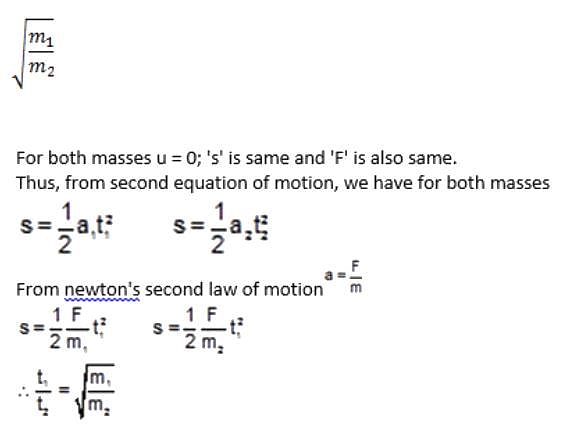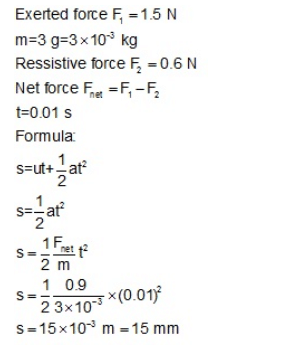Test: Newton's Second Law Of Motion - Class 9 MCQ
20 Questions MCQ Test Science Class 9 - Test: Newton's Second Law Of Motion
Two balls A and B, of masses m and 2m are in motion with velocities 2v and v respectively. Compare the force needed to stop them in the same time
Find the time taken by a body of mass 16 kg to come to rest from a uniform velocity of magnitude 10 m/s, when a force of 4N is applied continously
If the force acting on the body is zero. Its momentum is:
Which of the following has the largest momentum?
What force can change the velocity of a body of mass 1kg from 20 m/s to 30m/s in 2 seconds?
Find the time for which a force of 1kgwt acts on a body of mass 1 kg moving with a uniform speed of 4m/s to stop the body.
A resistive force of 16 N acts on a ball of mass 40 g continuously. If the initial velocity of the ball is 24 ms-1 ,the time taken by it to come to rest is:
The acceleration of an object is inversely proportional to:
Quantitative expression of force is given by:
If the same force acts on two bodies of different masses which are initially at rest and gain same displacement, then the ratio of time for which these forces act is:
A man throws a ball weighing 200 g vertically upwards with a speed of 10m/s. Its momentum at the highest point of its flight will be:
In high jump competition the athlete is made to fall on a cushioned bed to:
Which of the following is the relation between SI unit of gravitational force and Newton?
A carpenter exerts a force of magnitude 1.5 N at right angles to the surface of a nail of mass 3 gram to drive it into the wood. If wood offers a resistive force of 0.6 N and the time of interaction of hammer and the nail 0.01 s, the depth through which the nail penetrates is
Change in momentum when a car weighing 700kg changes its speed from 100m/s to 200 m/s is:
Momentum of a body of mass 0.5 kg moving with a speed of 10 m/s is
The relation between acceleration, mass and force is given by:
What is the momentum of a body of mass 2m and velocity v/2?
An object of mass 20 kg is moving with a velocity of 10 m/s. Its momentum will be:
|
88 videos|369 docs|67 tests
|






















